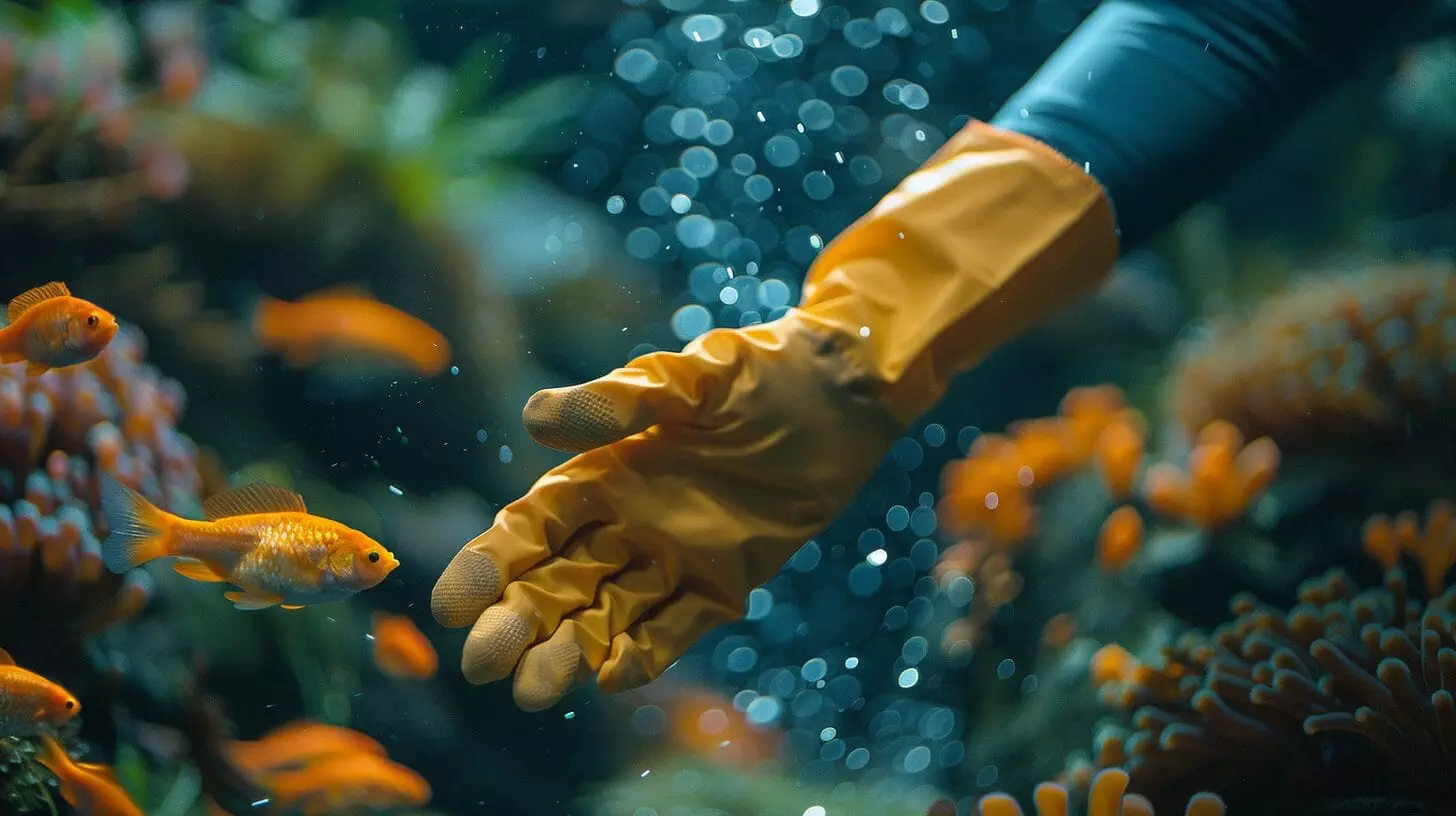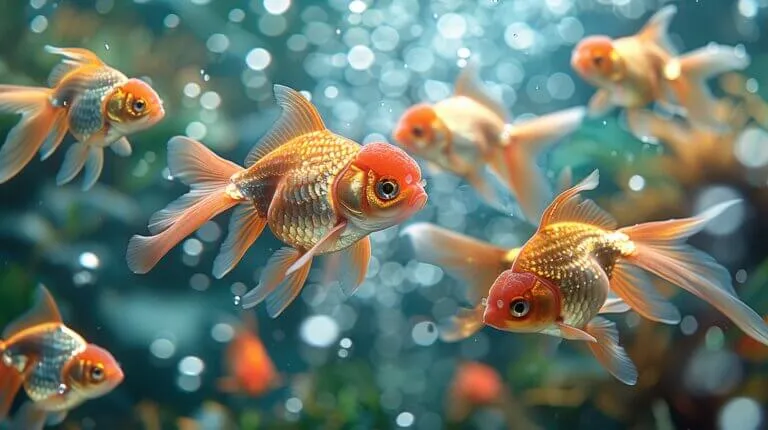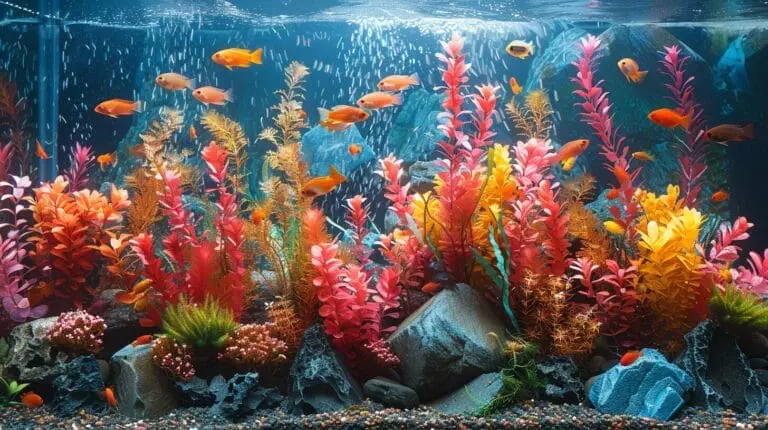Many hobbyists enjoy the calming presence of an aquarium, often unaware that the serene underwater world can harbor hidden bacteria and toxins. While generally safe, fish tank water and equipment can potentially host harmful microorganisms. Following basic safety guidelines, like the CDC’s recommendation for weekly water changes, is crucial for both your fish’s health and your own.
As a veteran aquarist with a decade of experience in fish care and disease study, I understand these potential risks. This guide shares proven steps for safe aquarium maintenance. You’ll learn why simple actions like washing your hands, using dedicated equipment, and wearing protective gear like gloves (and sometimes masks) are so important. We’ll cover how to recognize potential signs of infection early and implement clear, safe practices to enjoy your hobby without compromising your health. Keep reading for essential safety insights.
Key Takeaways
- Hand Hygiene is Crucial: Always wash your hands thoroughly with soap and water after touching fish, tank water, or equipment to prevent germ transmission.
- Use Protective Gear: Wear waterproof gloves, especially if you have cuts or weakened immunity. Consider a face mask when handling saltwater corals that may release toxins like palytoxin.
- Maintain Tank Cleanliness: Perform regular (e.g., weekly 25%) water changes and vacuum substrate to reduce nitrates and bacterial load, aligning with CDC advice.
- Dedicated Equipment: Use nets, buckets, siphons, and brushes exclusively for your aquarium to avoid cross-contamination.
- Recognize Warning Signs: Be aware of symptoms like red skin spots, persistent itchy cuts, or flu-like aches after tank maintenance, as these could indicate infection or toxin exposure. Seek medical advice if concerned.

Understanding the Potential Health Risks of Aquariums

While beautiful, aquarium water can potentially expose you to zoonotic bacteria—germs that can pass from animals to humans. Poor water quality can encourage the growth of these organisms. Contact with contaminated water, especially through small cuts or abrasions on the skin, can sometimes lead to infections presenting as skin rashes or, more rarely, respiratory issues.
Common Aquatic Pathogens
Several types of bacteria are occasionally associated with aquariums:
- Mycobacterium marinum: Often called “fish tuberculosis,” this bacterium can enter through skin breaks during cleaning, potentially causing persistent nodules or sores (granulomas).
- Aeromonas hydrophila: Found in freshwater, this germ can cause skin infections, gastroenteritis, or, rarely, more severe conditions like necrotizing fasciitis if it enters a wound.
- Vibrio vulnificus: More common in marine or brackish water, this bacterium can cause serious wound infections and potentially sepsis, especially in individuals with underlying health conditions.
- Other Bacteria: Less commonly, Pseudomonas and Salmonella have been linked to aquarium water, potentially causing infections or stomach upset.
Toxin Exposure Risks
Beyond bacteria, certain saltwater corals, particularly soft corals like Zoanthids (“zoas”) and Palythoa, can contain potent toxins such as palytoxin. Aerosolization during scrubbing or handling out of water can lead to respiratory distress, flu-like symptoms, or skin irritation upon contact.
Learn more about potential aquarium pathogens
Preventing Illness Through Proper Tank Maintenance
Consistent and correct aquarium maintenance is your first line of defense against potential health risks. Keeping the tank environment clean minimizes the load of harmful microorganisms.
- Regular Water Changes: Performing a partial water change (typically 25%) every week helps dilute and remove waste products like nitrates and phosphates, reducing the nutrients available for harmful bacteria growth. The CDC endorses regular cleaning.
- Substrate Cleaning: Use a gravel vacuum during water changes to remove trapped debris and waste from the substrate (gravel or sand), which can otherwise become a breeding ground for bacteria.
- Filter Maintenance: Clean your filter media regularly according to manufacturer instructions (often rinsing in removed tank water, not tap water, to preserve beneficial bacteria). A clogged filter compromises water quality.
- Water Parameter Monitoring: Regularly test your water for ammonia, nitrite, nitrate, and pH using a reliable test kit. Stable and appropriate water parameters indicate a healthier environment, less stressful for fish and less conducive to harmful bacteria.
- Use Aquarium-Safe Products: Only use cleaning tools and water conditioners specifically designed for aquariums to avoid introducing harmful chemicals.
See tank maintenance techniques
Personal Safety Practices for Aquarists
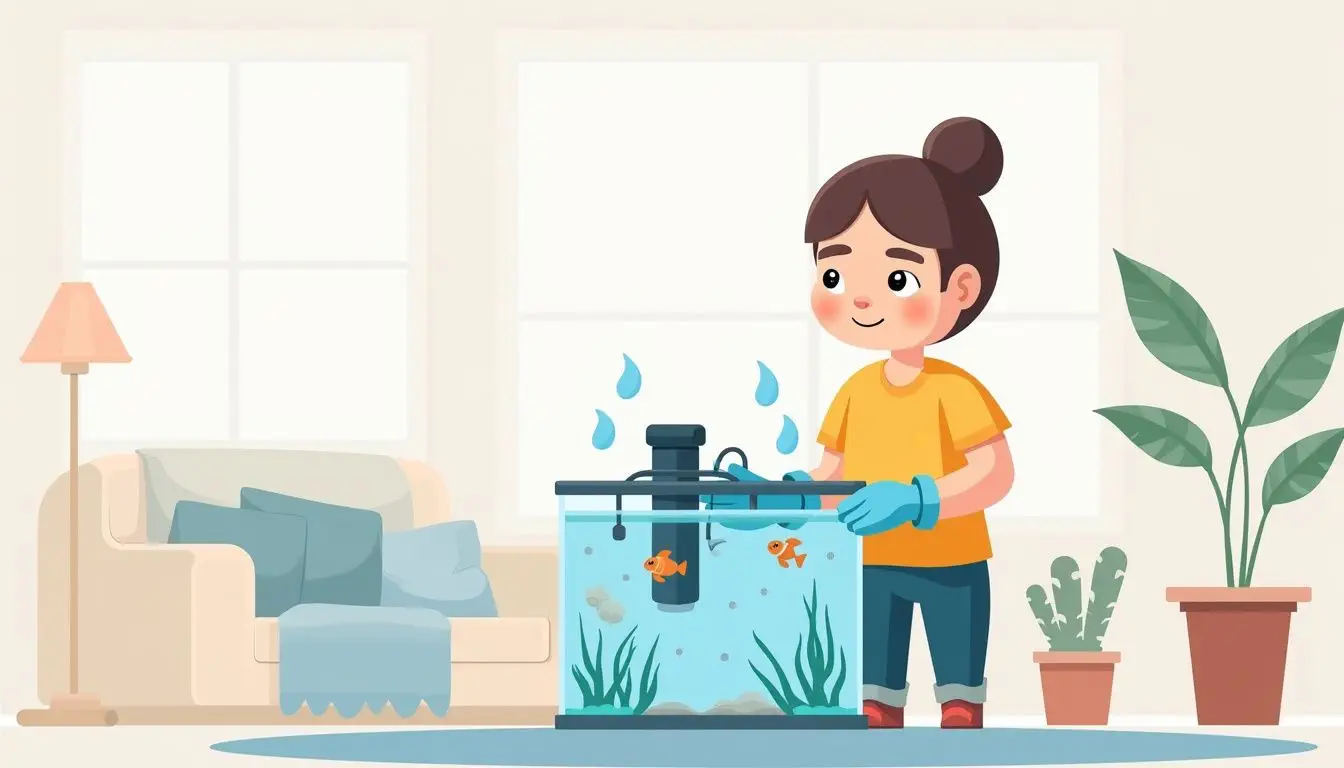
Beyond tank upkeep, personal precautions significantly reduce your risk of encountering issues:
- Wash Your Hands: This cannot be overstressed. Always wash hands thoroughly with soap and warm water for at least 20 seconds before and, especially, after any contact with aquarium water, fish, or equipment. Dry hands well afterwards.
- Wear Gloves: Use waterproof gloves (like disposable nitrile or sturdy rubber gloves dedicated to tank use) during maintenance. This is particularly important if you have any cuts, scrapes, eczema, or a weakened immune system.
- Protect Your Face (Saltwater): When handling or cleaning saltwater corals known to contain palytoxin (like Zoanthids or Palythoa), consider wearing safety glasses and a mask to prevent potential exposure through splashes or aerosols.
- Cover Wounds: Ensure any existing cuts or abrasions on your hands or arms are covered with waterproof bandages before starting tank maintenance.
- Use Dedicated Tools: Keep buckets, siphons, nets, scrubbers, and other tools separate and use them *only* for the aquarium. Never use them for other household purposes. Avoid cleaning tank equipment in kitchen sinks where food is prepared.
- Avoid Mouth Contact: Never use your mouth to start a siphon. Use a siphon starter pump or the immersion method. Avoid splashing water near your face.

Educating Others and Recognizing Symptoms
Sharing knowledge about safe practices helps the entire fishkeeping community. Remind fellow hobbyists, especially those new to the hobby or those with weakened immune systems, about these precautions. Emphasize that while risks exist, they are manageable with proper care.
Be vigilant for any unusual symptoms after aquarium maintenance, such as:
- Flu-like symptoms (fever, chills, aches, cough) which could potentially indicate palytoxin exposure or a systemic infection.
If you experience symptoms you suspect might be related to your aquarium, seek medical advice promptly and inform your doctor about your fishkeeping hobby.
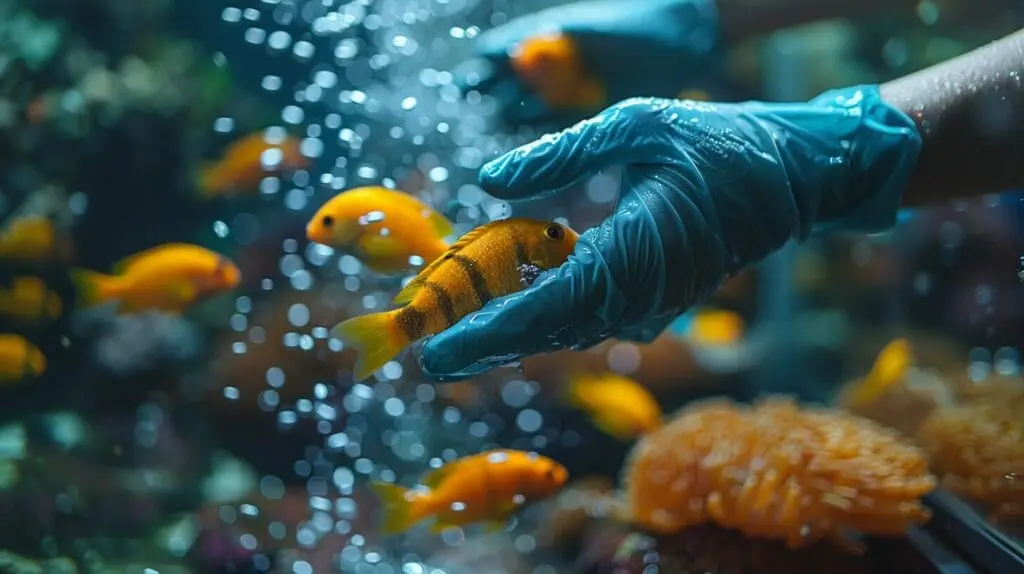
Conclusion: Enjoy Your Aquarium Safely
Aquariums offer immense enjoyment, and the potential health risks, while real, are generally low and highly preventable. By committing to regular tank maintenance, practicing good personal hygiene like handwashing and using gloves, employing dedicated tools, and being aware of potential symptoms, you can significantly minimize risks. These simple, consistent steps allow you to protect your health while continuing to cherish the beauty and tranquility of your underwater world.
Frequently Asked Questions
Can fish from aquariums make you sick?
Yes, although uncommon, fish and aquarium water can carry bacteria (like Mycobacterium marinum or Aeromonas) that may cause infections in humans, usually through contact with contaminated water via cuts or broken skin. Maintaining good water quality and hygiene greatly reduces this risk.
What precautions should I take to prevent illness from aquarium fish?
The key precautions are: always wash your hands thoroughly with soap and water after contact; wear waterproof gloves, especially if you have cuts or sensitive skin; use dedicated equipment for tank maintenance only; avoid contact between tank water and your mouth or face; and maintain good tank hygiene through regular cleaning and water changes.
Is it common to get sick from handling fish in saltwater aquariums?
Getting seriously sick is rare, but saltwater environments can harbor specific bacteria (like Vibrio) and certain corals contain toxins (like palytoxin). The risk increases with poor hygiene, open wounds, or handling potentially toxic species without care. Use gloves and exercise caution, especially with corals.
Are there specific risks associated with handling tropical fish?
Tropical fish themselves aren’t inherently riskier than cold-water fish, but the warmer water temperatures common in tropical tanks can support the growth of certain bacteria like Aeromonas. The primary risks remain exposure to bacteria through contaminated water, regardless of fish type. Standard hygiene practices apply.
Is it necessary to use antibiotics prophylactically when dealing with fish in aquariums?
No, using antibiotics preventatively for yourself is not recommended or necessary. Focus on preventative measures like handwashing and gloves. If you develop a persistent skin infection or concerning symptoms after aquarium contact, seek medical advice from a doctor, who can determine if treatment, including antibiotics, is needed.
Disclaimer: This content is for informational purposes only and does not constitute medical advice. Always consult with a qualified healthcare provider for any health concerns or before making any decisions related to your health or treatment. Information is based on general knowledge, aquarist experience, and publicly available resources like the CDC.

